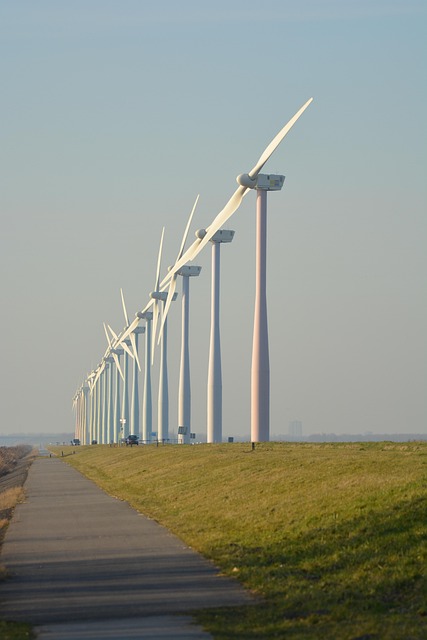Green Energy: A Catalyst for Global Change
In a world increasingly aware of environmental issues, green energy stands out as a beacon of hope, promising significant transformation not only in our energy systems but also in economic structures, social dynamics, and global policies. This article delves into how green energy serves as a crucial catalyst for global change, addressing its implications and potential as we transition towards a sustainable future.
Understanding Green Energy
Green energy refers to energy generated from renewable, zero-emissions sources that are environmentally friendly and sustainable over the long term. This contrasts with fossil fuels, which not only deplete natural resources but also contribute to pollution and climate change. Green energy sources include solar, wind, hydroelectric, geothermal, and biomass energy.
The Mechanisms of Green Energy Production
Green energy utilizes natural processes to harness energy. Solar panels capture sunlight and convert it into electricity through photovoltaic cells. Wind turbines utilize wind to generate larger quantities of clean energy. Hydroelectric power plants depend on flowing water to drive turbines, while geothermal power taps into the Earth’s heat. Biomass energy is derived from organic materials, which can be converted into electricity or biofuels.
The Environmental Imperative
The environmental argument for green energy is compelling. Climate change, driven largely by greenhouse gas emissions from burning fossil fuels, poses a significant threat to life on Earth. Transitioning to renewable energy sources can drastically reduce these emissions, helping to mitigate the worst impacts of climate change and preserve ecosystems.
For instance, according to the Intergovernmental Panel on Climate Change (IPCC), limiting global warming to 1.5 degrees Celsius compared to pre-industrial levels requires rapid and far-reaching transitions in land, energy, industry, and urban systems. Green energy plays a central role in these transitions, offering a sustainable alternative that can meet the world’s growing energy demands while protecting our planet.
Economic Transformation Through Green Energy
Green energy not only addresses environmental concerns but also drives economic transformation. The shift from fossil fuels to renewable energy sources is expected to create millions of jobs globally. The International Renewable Energy Agency (IRENA) reported that renewable energy employment reached 11.5 million jobs globally in 2018, and the sector continues to grow.
Investment in green energy technologies spurs innovation, manufacturing, and installation services. Countries that embrace renewable energy infrastructure can position themselves as leaders in an emerging global market, enhancing their economic resilience. Additionally, energy independence becomes more achievable with local renewable resources, reducing reliance on imported fossil fuels and enhancing energy security.
Innovations in Technology
Technology advancements in renewable energy make it more efficient and cost-effective. Solar panel costs have dropped by more than 80% since 2010, while wind energy technologies are also becoming more efficient. Energy storage solutions, such as batteries and pumped hydro storage, are vital in addressing the intermittency of renewable energy sources, allowing energy to be stored and used when demand peaks.
Social Dynamics and Community Benefits
Transitioning to green energy also has profound social implications. Access to clean, sustainable energy can uplift communities, particularly in developing regions. Renewable energy projects often facilitate local energy solutions, providing electricity to remote areas where traditional grids fall short. This access to energy can enhance education, improve healthcare services, and increase economic opportunities.
Moreover, community-driven renewable energy initiatives empower local populations. Citizen-led solar or wind projects foster a sense of ownership and responsibility, leading to community resilience and cohesion. As communities harness their renewable resources, they can tailor energy solutions to their specific needs, ensuring a more equitable distribution of resources.
Challenges and Critiques of Green Energy
Despite its many advantages, the transition to green energy is not without challenges. One of the main critiques is related to the initial investment costs associated with renewable technologies. Although the long-term savings and benefits outweigh the initial expenses, upfront capital can be a barrier, especially for low-income communities.
Additionally, the production and installation of renewable energy technologies still have environmental impacts. For instance, the mining of materials for solar panels and wind turbines can cause ecological disruption, if not managed responsibly. Furthermore, the disposal of old equipment poses a waste management challenge that requires innovative solutions.
Global Policies Driving Change
Governments worldwide play a critical role in the green energy transition. International agreements such as the Paris Agreement aim to unite nations in reducing greenhouse gas emissions and promoting sustainable practices. National policies and incentives are essential for encouraging the adoption of green technologies, whether through tax credits, subsidies, or investment in clean energy infrastructure.
In addition to government action, global partnerships and collaborations enhance efforts in advancing renewable energy initiatives. Initiatives such as the United Nations’ Sustainable Development Goals (SDGs) particularly emphasize affordable and clean energy as a central objective. Collaborative efforts can pool resources, share knowledge, and create a broader transformational impact.
The Path Forward
The transition to green energy is a journey that requires the collective commitment of governments, businesses, communities, and individuals. As we forge ahead, challenges must be addressed with innovative solutions, equitable policies, and responsible practices. Thoughtful planning and collaboration will enable countries to make informed choices about energy sources, while fostering economic growth, climate resilience, and social equity.
Investing in education and awareness will also play a pivotal role in shaping public perception and acceptance of renewable energy technologies. By encouraging and inspiring communities to engage with and adopt sustainable practices, a culture of sustainability can flourish, ultimately ensuring the success of global green energy initiatives.
Conclusion
Green energy represents more than just an alternative to fossil fuels; it stands as a cornerstone for global change. By embracing renewable energy sources, we can create an environmentally sustainable future, encourage economic innovation, and enhance social equity worldwide. As we advance, it is critical to recognize the interconnectedness of energy, the economy, and society, ensuring that our strides towards a sustainable future are inclusive and holistic.




